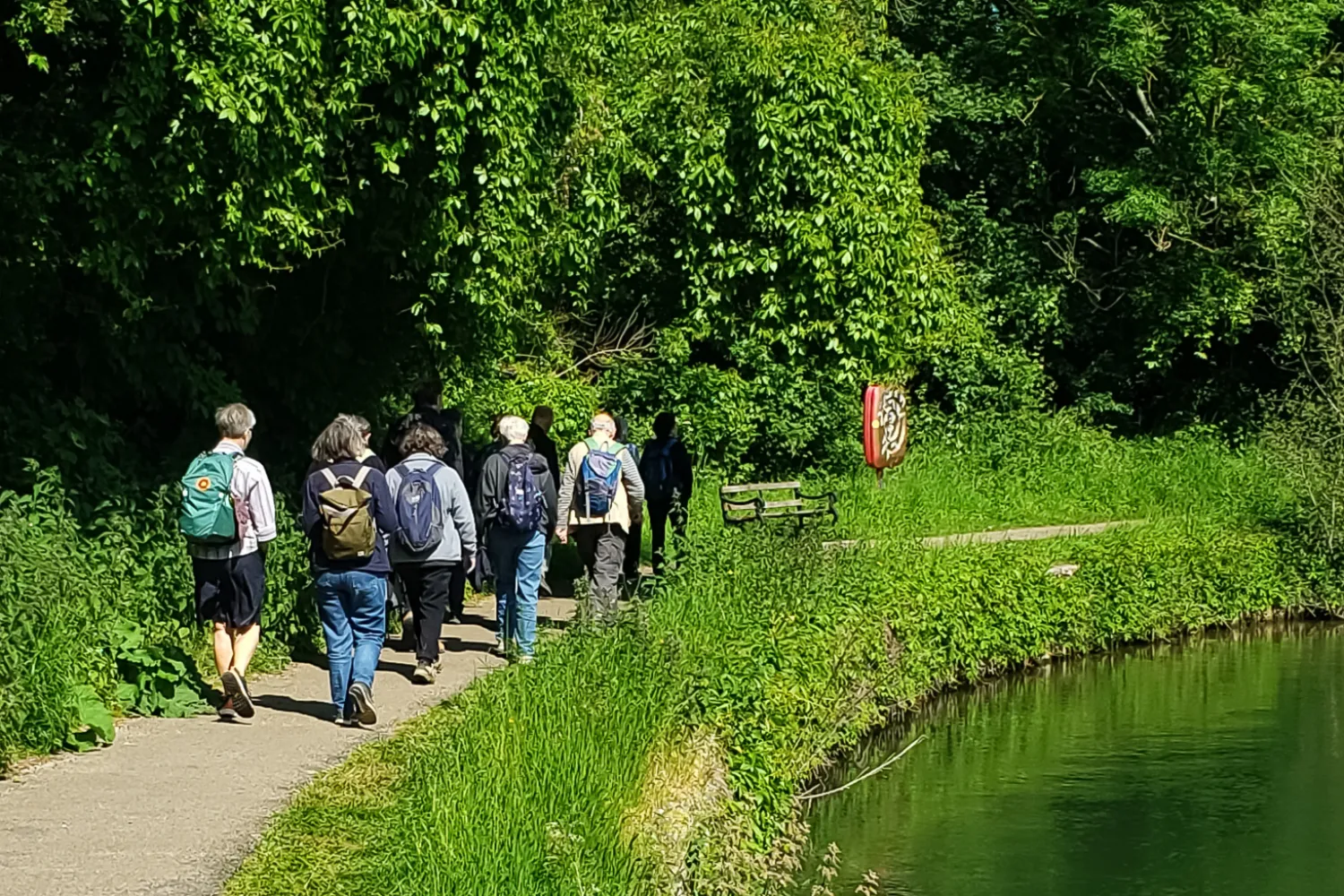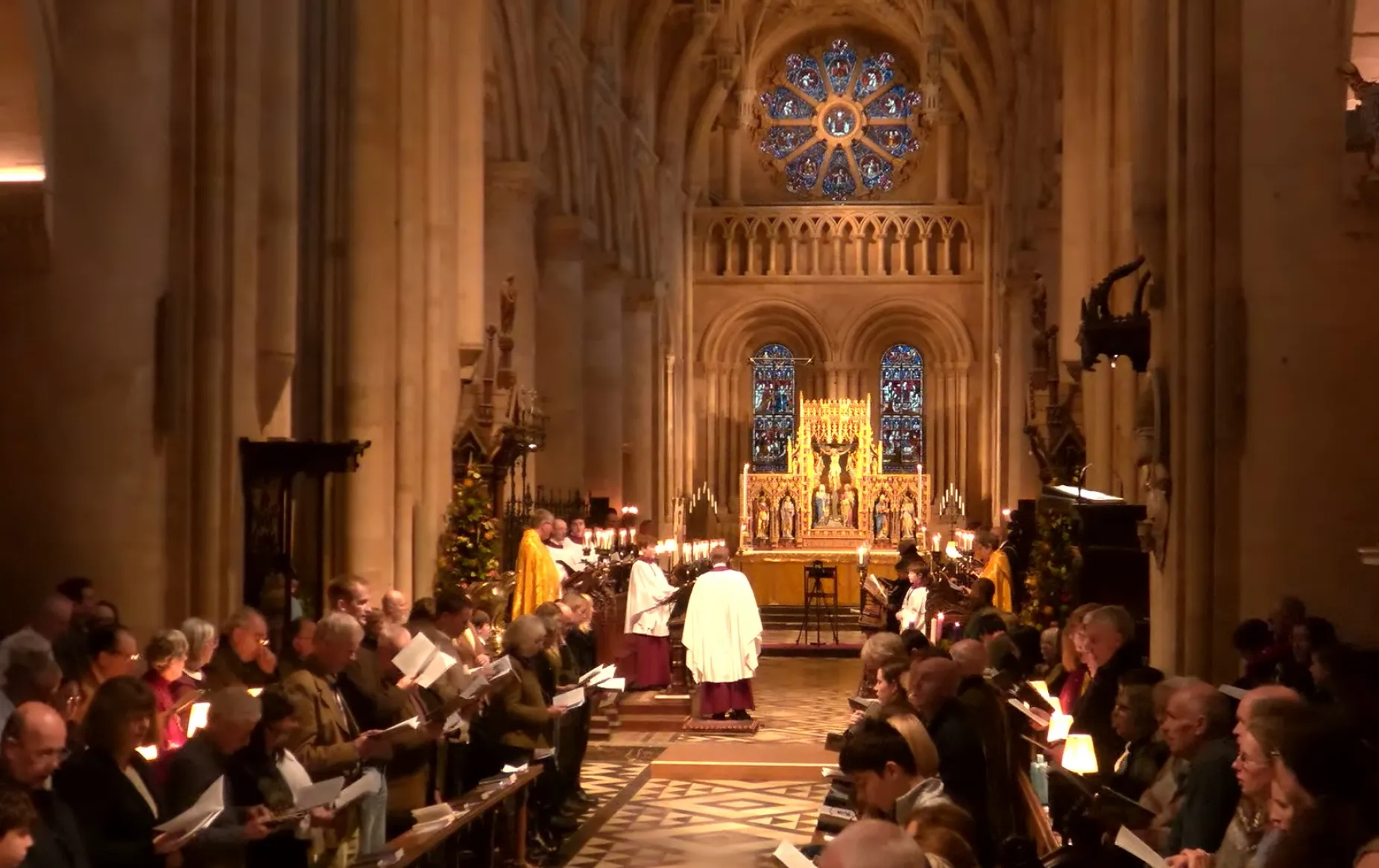Breadcrumb
New St Frideswide’s Way Pilgrimage Walk Launches
We are excited to launch a new walking pilgrimage route from Oxford to Reading along the Thames Path, named after Oxford’s patron saint.
St Frideswide's Way begins at her shrine in the Cathedral, which once brought medieval pilgrims from far and wide to Oxford. The route follows a picturesque 40-mile stretch of the Thames Path, with stops along the way at 24 different churches in Oxfordshire and Berkshire's riverside towns and villages.
The walk finishes at the ruins of Reading Abbey. Founded by King Henry I in 1135, it was one of the largest and wealthiest royal monasteries in Europe. Prior to the Reformation, the abbey held over 230 relics, including one traditionally venerated as the hand of St James, bringing large numbers of pilgrims to Reading.
The first groups of pilgrims to complete the four-day walk will set off from Oxford on Wednesday 26th June, led by our Priest Vicar Revd Dr Zachary Guiliano. The Bishop of Oxford, the Rt Revd Dr Steven Croft, will bless the walkers as they set out from Christ Church, and others will meet and send them along their way each day with prayers of blessing.
As an accredited Camino Inglés route, St Frideswide’s way can be walked as part of the Camino de Santiago (The Way of St James), the famous Europe-wide network of medieval pilgrimage routes culminating at the Cathedral of St James in Santiago de Compostela in Spain. Walking the Camino has seen a huge increase in popularity in recent years, with nearly 440,000 pilgrims across Europe walking to Santiago in 2022 by the different available routes, including over 24,000 on the Camino Inglés.
At Reading, walkers can carry on in the footsteps of their medieval predecessors by continuing on the connecting Way of St James, another Camino route which culminates at Southampton, where English pilgrims would once have boarded ships to A Coruña and journeyed onwards to Santiago.
Saint Frideswide is thought to have founded a convent on the site of Christ Church in the late 7th century. Her grave in Oxford soon became a site of pilgrimage. In 1180, her remains were enshrined in the Augustinian priory church which had replaced the convent (which would later become the Cathedral). An ornate new marble and limestone shrine was constructed in 1289, reflecting the growing numbers of pilgrims. The shrine was destroyed in 1538 during the English reformation, but the incredible rediscovery of fragments of the monument in a well by the Cathedral in the 1889s and further pieces in the cloisters in 1985 allowed for its partial reconstruction.
The Cathedral today welcomes pilgrims from around the world to visit the shrine. Saint Frideswide’s shrine also plays a central part in the Cathedral’s education work with school children, teaching them about the medieval culture of pilgrimage and Oxford’s place in it.
If you would like to walk St Frideswide’s Way this summer, copies of the Companion book will soon be available here at Christ Church.

Other Christ Church news





